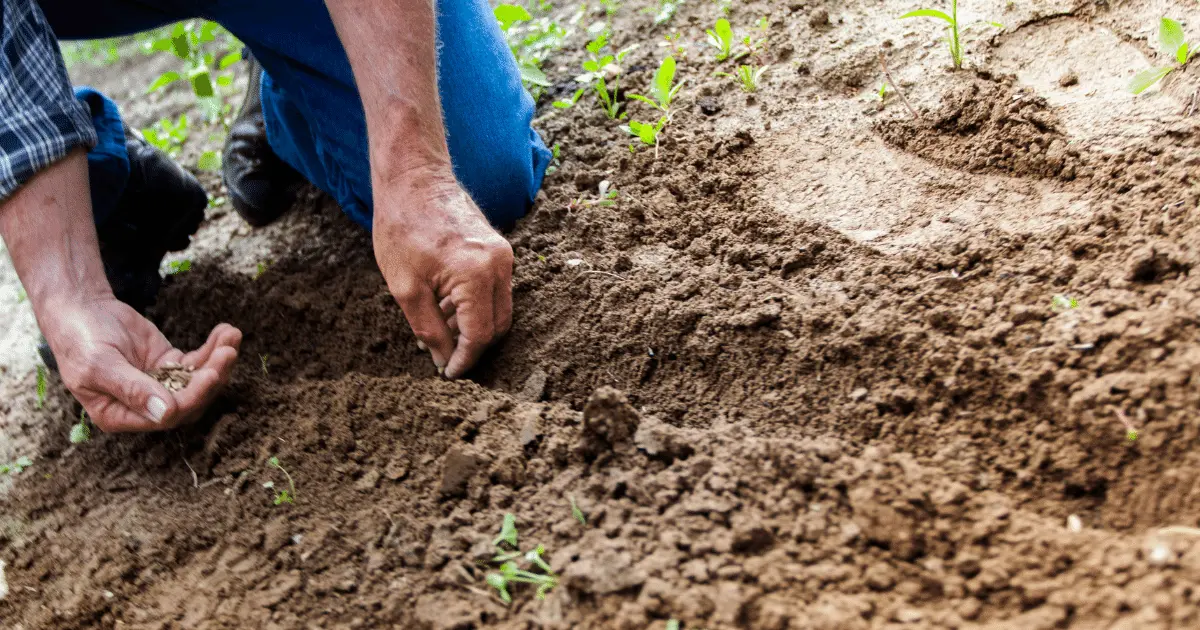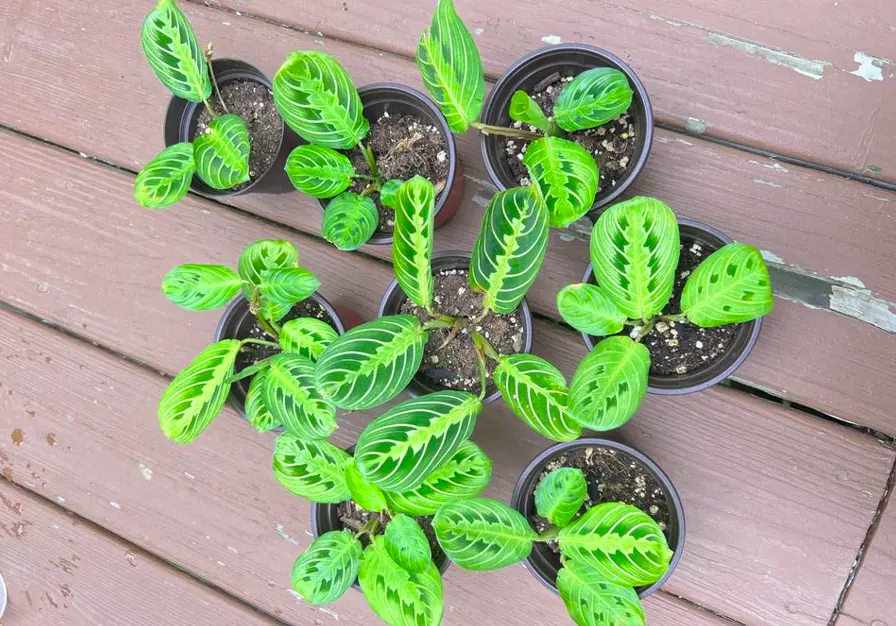The lemon-lime prayer plant got its name because of some specific characteristics of the plant. You will observe that the plant opens its leaves in the morning and closes the leaves at night like the hand of someone observing prayers. They have distinctive colored veins on their oval-shaped leaves, which make their foliage gorgeous.
The Lemon Lime Prayer Plant is naturally native to Asia, Africa, and predominately Brazil and belongs to the Marantaceae plant family.
Usually regarded as a thirsty plant because of its need for regular watering during the summer to maintain its fantastic bloom, it may appear challenging to care for the plant.
How to Plant and Propagate the Lemon Lime Prayer Plant

You can plant and start growing your lemon-lime prayer plant in two ways: stem cutting or seed propagation.
Seed Propagation of the Lemon Lime Plant
The seed propagation method is less common than the stem-cutting method because the seeds are hard to get. Since the seed usually comes from dried flowers of the plant, primarily found in their natural environment. Lemon lime prayer plants planted indoors do not develop flowers, making it more challenging to come by their seeds.
You can propagate through seeds using the following steps:
- Collect seeds from the faded flower of the lemon-lime prayer plant.
- Sow the seed in moist soil and maintain the temperature at 55-65 Fahrenheit.
- Provide a plant cover to preserve the moisture of the plant.
- As the plant develops, expose them to your natural environment by removing the plant cover.
Propagation of The Lemon Prayer Plant by Stem Cutting
Propagation of the lemon-lime plant by stem cutting is the most common method because of the lack of the plant’s seed. Follow the steps below to get it right using the stem-cutting methods:
- Seek a healthy plant and monitor the stems.
- Determine the point at which leaves formation occurs (leaf nodes).
- Cut the stems just below the leaf nodes (because roots will develop from these leaf nodes).
- Then dip the fresh stem cutting into the water before dipping in a rooting hormone.
- Place on an appropriate soil mix and ensure to keep the soil mix moist.
- Remove leaves close to the bottom of the stem and leave just a handful of leaves on the stem.
- Use a plant cover to maintain moisture, as the roots absorb water from the roots and the leaves.
- At this initial stage, reduce the light on the plant till the root starts developing.
- Look for a signal when the leaves begin seeking lights, as the root would have started developing at this stage.
- Then move it to a place where they will get more exposure to sunlight.
Propagation of the Lemon Lime Plant by Slips
The slip method will be possible if you have a very healthy plant with several stems which can be divided into slips.
Gently clean off dirt on the roots before transplanting the slips to new pots with the right soil mix. Ensure they are planted at the same depth before uprooted and maintain all suitable conditions. You will now have more plants from each slip that has been propagated.
How to Care for the Lemon Lime Prayer Plant

It is easy to maintain and care for this plant if you know what they need to thrive, as will be discussed below.
Flowering and Fragrance of the Lime Lemon Plant
The lemon-lime plant will produce flowers when they are planted outdoors, although these flowers do not live long. The indoor lime lemon plant does not produce flowers; you can only get more flowers in its native or originating environment.
Light and Temperature Requirement for the Lemon Lime Prayer Plant
Place your lemon-lime prayer plant in a warm environment with adequate bright light. I will advise against placing your lemon plant in direct sunlight, which will scorch and damage the leaves. When indoors, put them away from the windows that receive sunlight directly, and your plant will blossom fully.
Soil Requirement for Lemon Lime Prayer Plant
Take note that the root of the lemon-lime prayer plant is shallow and will thrive in a light and airy soil mixture. Gets a well-drained soil with a slightly acidic pH ranging from 5.5 to 6. You can add perlite and coarse sand to increase the soil’s drainage or use a planting pot with draining holes.
Watering the Lemon Lime Prayer Plant
The plant is water-loving, and you should water it regularly to maintain its luster. As much as it needs enough water, you should be careful to avoid getting the soil all soggy. In that case, check on the water content by determining if the leaves start curling or test if the soil is getting dried up.
Dip your finger to test to determine if the soil is getting dried. I water my lemon lime plant once a week, and during the winter, you should reduce the times you water the plant. Consider the kind of water you use, preferably distilled, rain, or filtered water, for the plant cannot tolerate chlorine.
Humidity Required for Lemon Lime Prayer Plant
Like most plants in the family of Marantaceae plant, the lemon-lime prayer plant will require high humidity. You can increase the humidity of the lemon-lime prayer plant in the following ways:
- By misting or sprinkling water on the leaves.
- Placing a tray of water near the plant increases the humidity as it evaporates.
- You can get a humidifier to increase the humidity in the room
- Place the plant in your bathroom.
Fertilizer Application
Use water-soluble fertilizers to aid the plant’s growth during the spring and fall. During the winter, reduce the frequency of fertilizers.
Repotting the Lemon Lime Prayer Plant
You might need to repot the plant if you are experiencing slow growth, which will involve changing the soil mix. Report to a slightly bigger pot and monitor the plant after repotting for two to three weeks, as it may experience some shock from the changes.
Pruning the Lemon Lime Prayer Plant
Prune and remove leaves turning yellow or dead to keep the plant looking good and make space for growth.
Frequently Asked Questions
What are the Common Pests and Diseases?
They are mainly affected by common houseplant pests such as spider mites and mealybugs. And the common diseases are caused by water deficiency or too much water in the soil.
Are The Plant Toxic?
The lemon-lime prayer plants are non-toxic to humans and animals.
